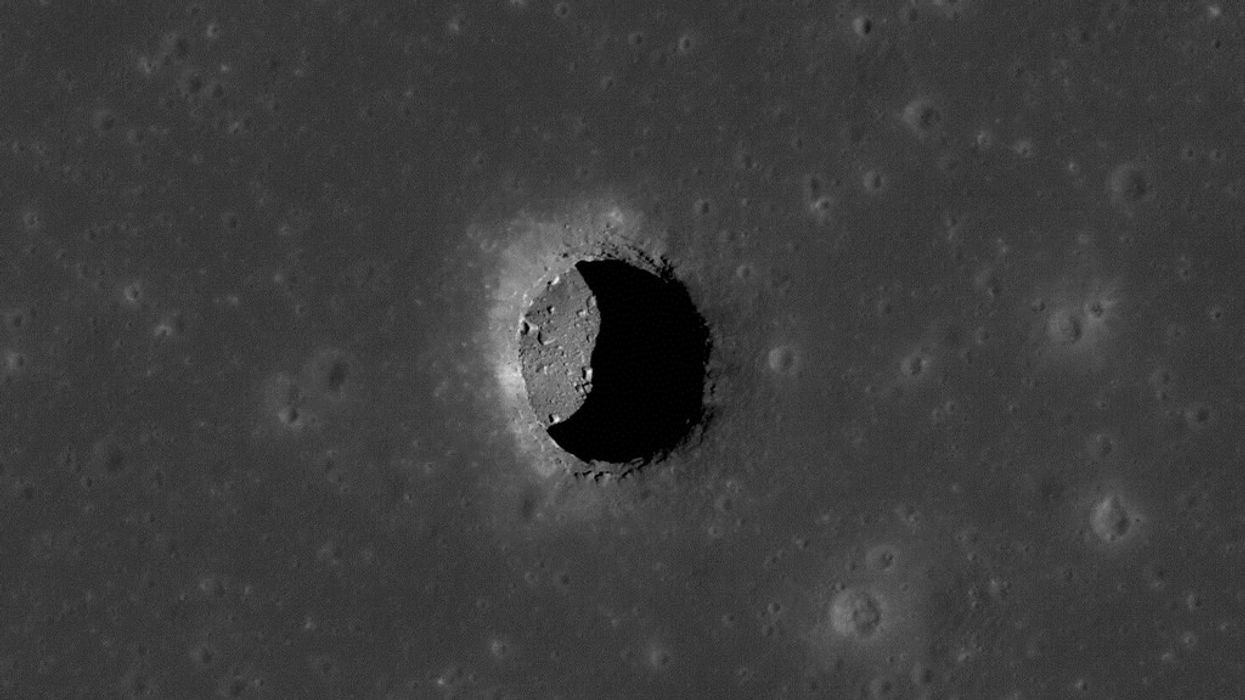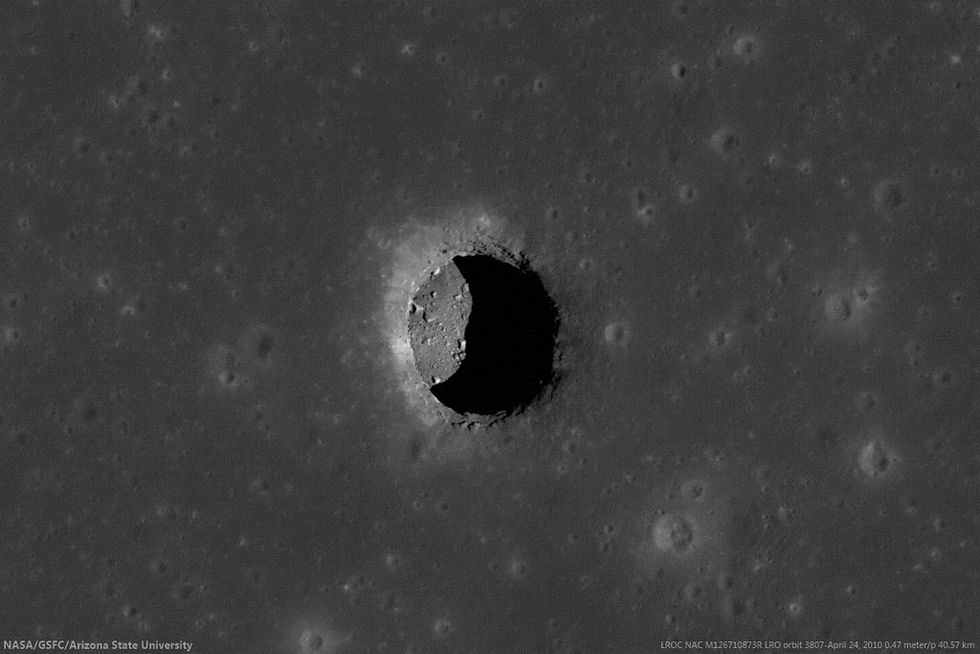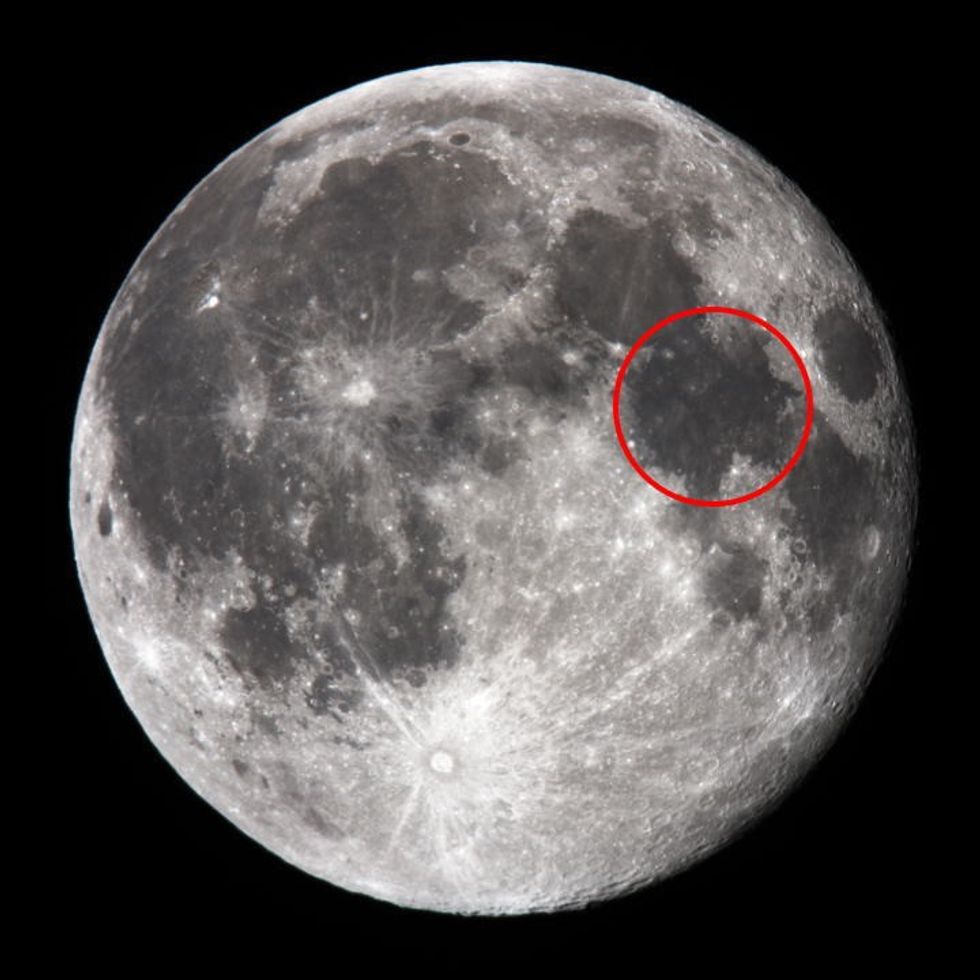Moon mystery discovered as scientists uncover lunar 'tunnel' under the surface


Scientists say the tunnel under Mare Tranquillitatis could be a base for a future lunar base
Don't Miss
Most Read
Latest
Researchers have found evidence of an underground cave on The Moon that could be a future site for a lunar base.
The cave appears to be reachable from an open pit in the Mare Tranquillitatis (Sea of Tranquility).
Radar data collected by Nasa’s lunar reconnaissance orbiter (LRO) show the deepest known pit on the moon, leads to a cave 45 metres wide and up to 80 metres long, an area equivalent to 14 tennis courts.
The cave is located about 150 metres beneath the surface, near the ancient lava plain where Neil Armstrong and Buzz Aldrin first set foot on the moon more than half a century ago.

The Tranquillitatis Pit Crater
|WikICommons/NAsa
Professor in earth sciences at the University of Manchester Katherine Joy said: "Lunar cave systems have been proposed as great places to site future crewed bases.
"The thick cave ceiling of rock is ideal to protect people and infrastructure from the wildly varying day-night lunar surface temperature variations and to block high energy radiation which bathes the lunar surface. However, we currently know very little about the underground structures below these pit entrances."
A researcher at Arizona State University Robert Wagner, said one of the biggest challenges would be access adding: "Getting into that pit requires descending 125 metres before you reach the floor, and the rim is a steep slope of loose debris where any movement will send little avalanches down on to anyone below
"It’s certainly possible to get in and out, but it will take a significant amount of infrastructure."
LATEST DEVELOPMENTS:

The location of Mare Tranquillitatis on the Moon
|WIkiCommons/Nasa
The data was actually gathered in 2010, as part of Nasa’s ongoing LRO mission.
However, only after researchers re-analysed that data with new signal processing techniques they discovered that there is an "underground cave conduit".
Wes Patterson, from the Johns Hopkins Applied Physics Laboratory, said: "This research demonstrates both how radar data of the Moon can be used in novel ways to address fundamental questions for science and exploration and how crucial it is to continue collecting remotely sensed data of the Moon.
"This includes the current LRO mission and, hopefully, future orbiter missions."
Astronomers have already found more than 200 pits on the Moon’s surface, some of which appear to have been formed when a lava tube collapsed underneath.
The work is published in a new paper, ‘Radar Evidence of an Accessible Cave Conduit below the Mare Tranquillitatis Pit’, in the journal Nature Astronomy.









